 |
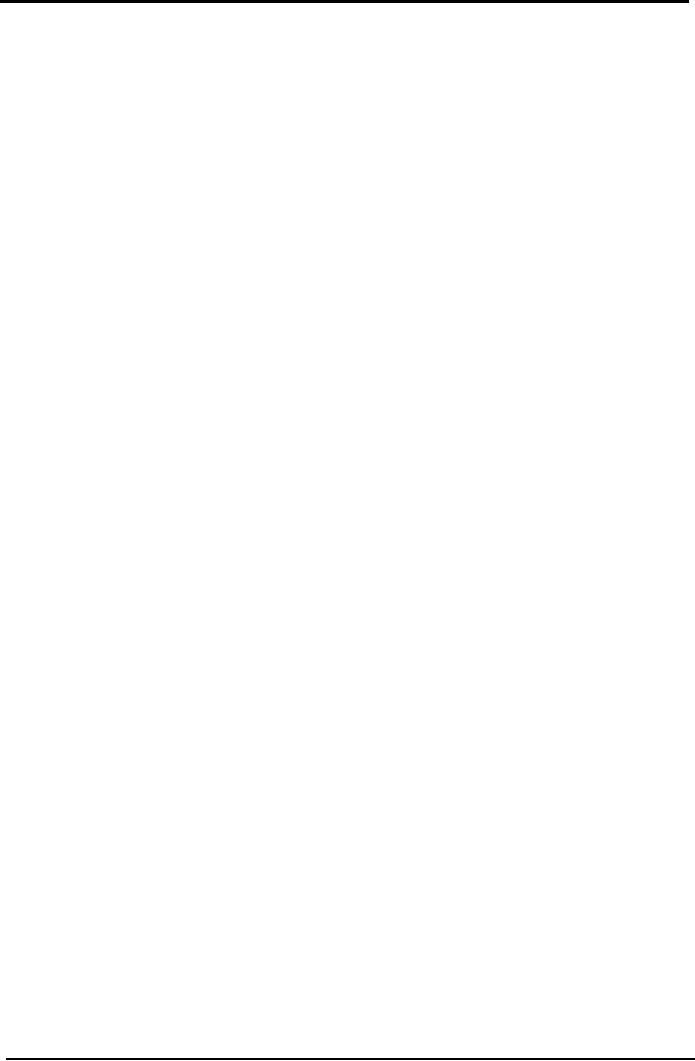
Cost
& Management Accounting
(MGT-402)
VU
LESSON#
8
CONTROL
OVER MATERIAL
Control
over material is essential for
different reasons By and
large, materials are the
equivalent of
cash
and therefore pilfering and
theft may occur quite
often if effective control is
not exercised.
Prevention
of material from deterioration and
waste is also necessary. It is
also important to
eliminate
obsolete stocks with the
consequence easing of storage
space and storage
costs-
Moreover,
control over materials is
necessary to prevent extra expenditure on
excessive purchase
of
materials and improper use
of material. And above all, regular
supply of materials to
the
production
departments would help production on
schedule. It will also
ensure preparation of
accurate
statements of the value of material consumed by
each department/job and
final
statements
prepared according to their
needs.
From
the accounting point of
view, the following are
some important requirements of the
effective
material
control;
1.
That no material is purchased without
proper authority.
2.
That the quantity of material
purchased is in fact
received.
3.
That there are proper
storage facilities.
4.
That no material is issued without
proper authorization and the
purpose for which the
material
is required is recorded.
5.
That the accounts provide a
running balance of the value of
the materials on
hand.
Replenishment
of Stock
Materials
are received and issued by
the storekeeper to different
production departments. One
important
duty of a storekeeper is the restocking
of stores in order to ensure
efficient functioning
of
the stores department and
steady flow of materials to
the production departments. The
inflow
and
outflow of materials has to be
regulated in such a manner that
neither production is
adversely
effected
due to want of materials nor
there unnecessary blocking of
capital funds due to
overstocking
of raw materials.
This
implies that there is always a
limit to the minimum and
maximum quantity of materials
or
stock
in the store. The
storekeeper is to requisition for stock
for replenishment in time so as
to
ensure
honoring of requisition slips
from production departments.
Replenishment of stock
therefore
implies as `taking steps for
the fresh purchase of those
stocks which have been
exhausted
and
for which requisitions are to be
honored in future'.
In
order to ensure that the
optimum quantity of materials is
purchased and stock--neither
less nor
more,
the storekeeper applies scientific
techniques of materials management.
Fixing of certain
levels
for each item of materials
is one of such techniques.
The
following levels are generally
fixed.
1.
Order level.
2.
Maximum level.
3.
Minimum level.
4.
Danger level.
Order
Level
It
is also known as Re-ordering level in
relation with an item of stock. It is
the point at which it
becomes
essential to initiate purchase
orders for its fresh
supplies.
Normally,
re-ordering level is a point
between the maximum and
the minimum stock levels.
Fresh
orders
must be placed before the
actual stocks touch the
minimum level, so as to take
care of lapse
in
time the placing of the
order and the receipt of
materials in stores.
Following
are the factors that
are taken into account for
fixing re-order
level.
1.
The maximum
consumption.
50
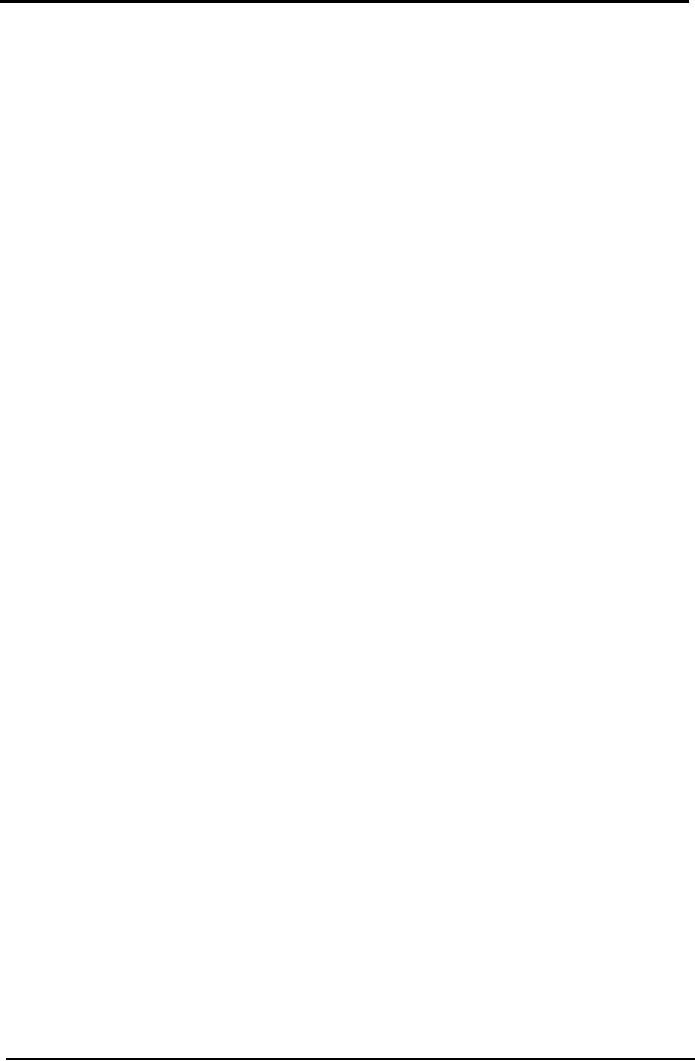
Cost
& Management Accounting
(MGT-402)
VU
This
is the maximum quantity of
the material that is
expected
to be consumed in a day or in a week or in
a
month
time.
2.
Lead time.
This
is the estimated time period in
number of days or in
weeks
or in months, which is necessarily
required for
placing
an order and finally receiving it in
the stores.
There
might be different lead
times for different
consumptions.
For example; more time
will be required for
maximum
consumption comparing with the
time required
for
minimum or average
consumption.
3.
Economic order
quantity.
Details
of the economic order quantity
will be covered in
the
next lesson; here this
will be sufficient to learn that it
is
the
level where the ordering
quantity will be most
economical.
Although
EOQ is not required while calculating
the
order/re-order
level but one must keep in
mind the EOQ
of
the item for determining
the order level.
Most
of the times where purchases
are made according to
the
EOQ, the order level is
half or the EOQ.
Formula
Order
Level = Maximum Consumption x Lead Time
(maximum)
Maximum
Stock Level
The
maximum stock level indicates
the maximum quantity of an
item of material which can
be
held
in stock at any time. The maximum stock
level is fixed by taking into
consideration the
following
factors:--
1.
Minimum rates of
consumption.
This
is the minimum quantity of
the material that is
expected
to be consumed in a day or in a week or in
a
month
time.
2.
The lead time.
This
is the estimated time period in
number of days or in
weeks
or in months, which is necessarily
required for
placing
an order and finally receiving it in
the stores.
There
might be different lead
times for different
consumptions.
For example; more time
will be required for
maximum
consumption comparing with the
time required
for
minimum or average
consumption.
3.
Economic ordering
quantity.
Details
of the economic order quantity
will be covered in
the
next lesson; here this
will be sufficient to learn that it
is
the
level where the ordering
quantity will be most
economical.
4.
Availability of funds,
5.
Availability of storage
space.
6.
Risk of obsolescence, depletion,
evaporation and material waste,
7.
Future fluctuations of price of
materials.
8.
Cost of storage and
insurance.
9.
The nature of material--seasonal supplies
etc.
51
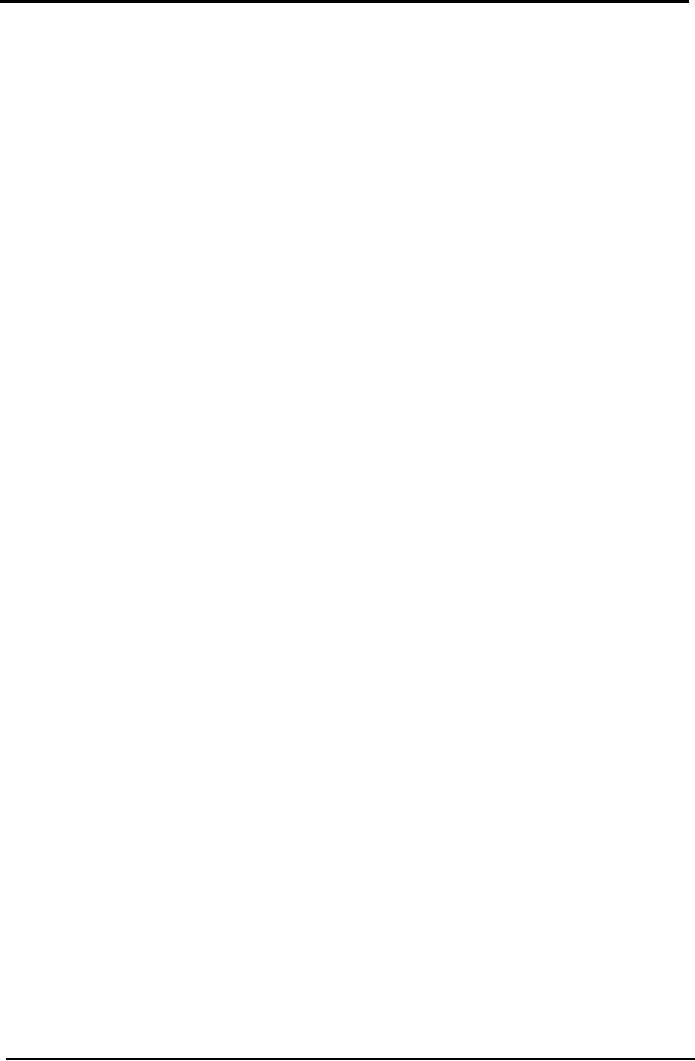
Cost
& Management Accounting
(MGT-402)
VU
10.
Any restrictions imposed by
the government or restrictions in
respect of import of
materials.
The
maximum stock can be calculated by
applying the following
formula.
Formula
Reorder
level (Minimum consumption
x Lead time) + EOQ
Putting
the formula elements of reorder
level over here the
result will be like
this:
(Maximum
consumption x Lead time) (Minimum
consumption x Lead time) + EOQ
[(Maximum
consumption - Minimum consumption) Lead
time]+ EOQ
Minimum
Level;
This
represents the quantity
below which the stock of any
item should not be allowed to
fall. In
other
words, an enterprise must
maintain minimum quantity of stock so
that the production is
not
adversely
affected due to non-availability of
materials.
The
minimum stock level is fixed by taking
into account:
1.
Re-order level.
2.
Lead time.
This
is the estimated time period in
number of days or in
weeks
or
in months, which is necessarily required
for placing an order
and
finally receiving it in the
stores.
There
might be different lead
times for different
consumptions.
For
example; more time will be
required for maximum
consumption
comparing with the time required
for minimum
or
average consumption.
3.
Average rate of
consumption.
This
is the minimum quantity of
the material that is expected
to
be
consumed in a day or in a week or in a
month time.
Formula
Reorder
level-- (Average consumption
x lead time)
Putting
the formula elements of reorder
level over here the
result will be like
this:
(Maximum
Consumption Average Consumption) x Lead
time
Danger
Level
The
danger level is below the
minimum level and represents
a stage where immediate steps
are
taken
for getting stock replenished. When
the stock reaches danger
level it is indicative that if no
emergency
steps are taken to restock the
materials, the stores will
be completely exhausted
and
normal
production stopped. Generally,
the danger level of stock is
fixed above the minimum
level.
The
danger stock level is fixed by taking
into account:
1.
Average Consumption.
2.
Emergency Lead Time.
Formula
Average
consumption x Emergency time
PRACTICE
QUESTIONS
Q.
1
Following
is the information provided by
the concerned departments about two
components
FRAME
and VASE regarding their
replenishment and
usage:
Minimum
usage
25
units per week
each
Maximum
usage
75
units per week
each
Average
usage
50
units per week
each
52
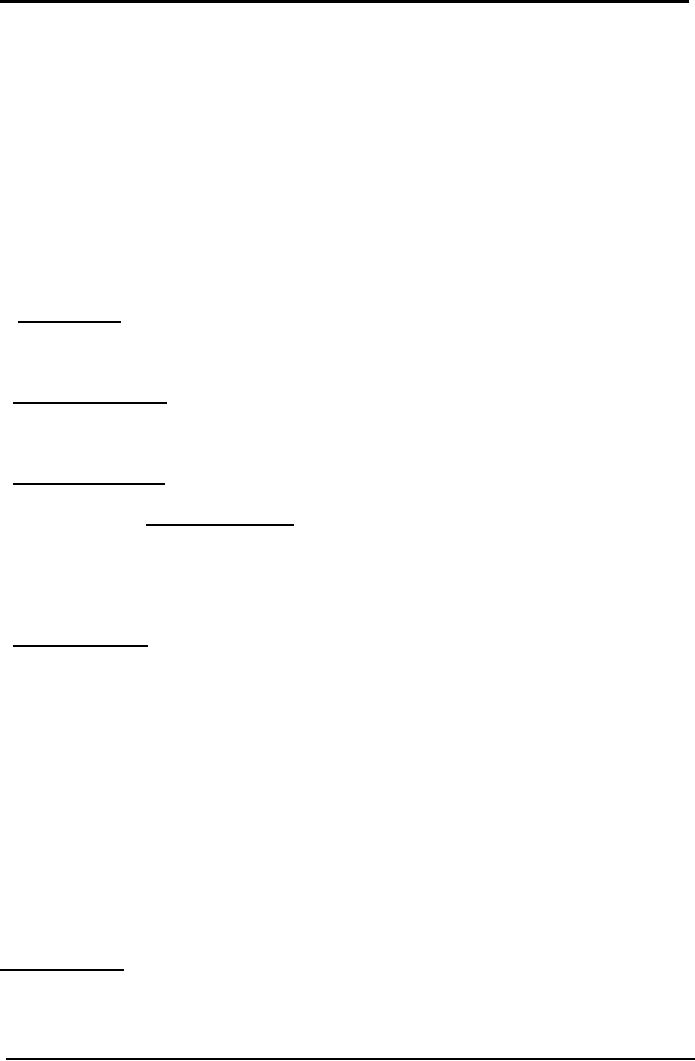
Cost
& Management Accounting
(MGT-402)
VU
Re-order
quantity
Frame
300
units
Vase
500
units
Re-order
period
Frame
4
to 6 weeks
Vase
2
to 4 weeks
Emergency
lead time
Frame
2
weeks
Vase
1
week
Calculate
for each
component:
1.
Re-order
level,
2.
Maximum
stock level, and
3.
Minimum
stock level,
4.
Danger
stock level.
Solution
Re-order
level:
Maximum
consumption x Lead Time
[maximum]
Frame
75x6
450
units
Vase
75x4
300
units
Maximum
stock level:
Reorder
level (Minimum consumption
x Lead time [minimum]) +
EOQ
Frame
450
+ 300 (25 X4)
650
units
Vase
300
+ 500 (25x2)
750
units
Minimum
stock level:
Reorder
level (Average consumption
x lead time [Average])
Average
lead time = Maximum +
Minimum
2
Frame
450
(50X5)
200
units
Vase
300
(50X3)
150
units
Danger
stock level:
Average
consumption x Emergency lead time
Frame
50
x 2
100
units
Vase
50
x 1
50
units
Q.
2
From
the following information
calculate the Maximum stock
level, Minimum stock
level,
Re-ordering
level and Danger stock
level;-
(a)
Average consumption
330
units per day
(b)
Maximum consumption
420
units per day
(c)
Minimum consumption
240
units per day
(d)
Re-order quantity
3,600
units
(e)
Re-order
period
10
to 15 days
(f)
Emergency Re-order period 12 days
Solution
:
Re-ordering
level:
Maximum
consumption x Lead Time
[maximum]
420x15
6,300
units.
53
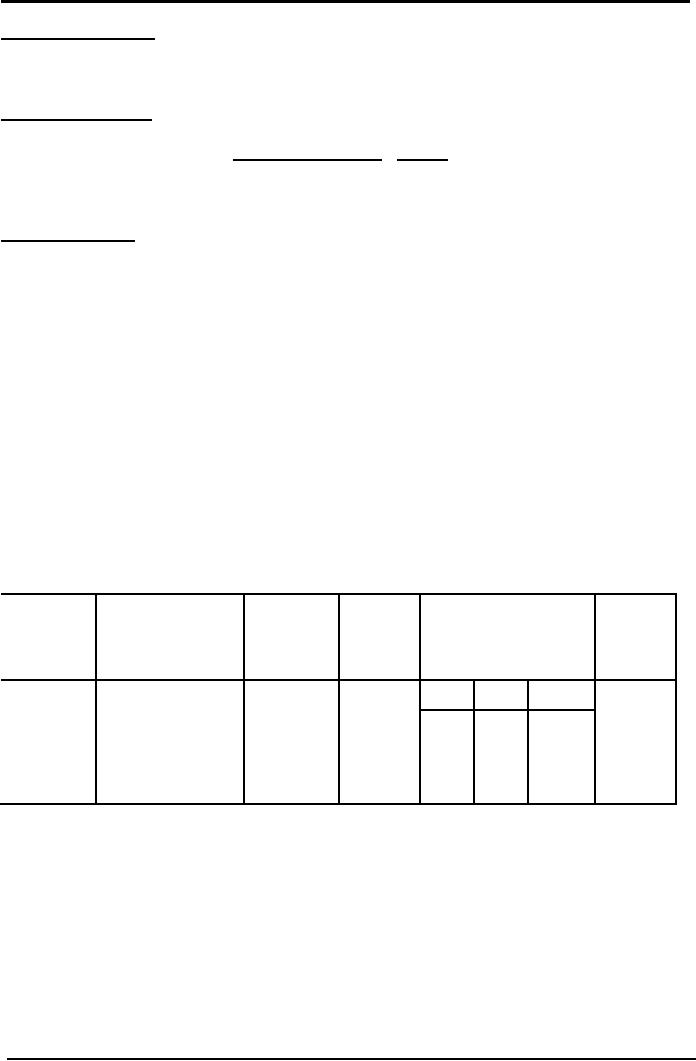
Cost
& Management Accounting
(MGT-402)
VU
Maximum
stock level:
Reorder
level (Minimum consumption
x Lead time [minimum]) +
EOQ
6,300
(240 x 10) +
3,600
7,500
units
Minimum
stock level:
Reorder
level (Average consumption
x lead time [Average])
Average
lead time
=
Maximum + Minimum =15+10
=12.5
2
2
6,300
- 330 x 12.5
2,175
units
Danger
stock level:
Average
consumption x Emergency lead time
330
x 12
3,960
units
PROBLEMS
Q.
1
From
the following particulars, calculate:
--
Re-order
level, Minimum level,
Maximum level, and Danger
level.
Average
usage
400
units per day
Minimum
usage
60
units per day
Maximum
usage
130
units per day
Economic
order quantity
5000
units
Re-order
period
25
to 30 days
Q.
2
In
manufacturing its Products, a Company
uses three raw materials. A, B
and C, in respect of
which
the following apply:
Raw
Usage
per unit of
Re-order
Price
Delivery
Period
Re-order
material
Product
Quantity
Per
kg.
level
kg,
kg.
kg.
Min
Avg
Max
A
10
10,000
0.10
1
2
3
8,000
B
4
5,000
0.30
3
4
5
4,750
C
6
10,000
0.15
2
3
4
2,000
Weekly
production varies from 175
to 225 units, averaging 200
units.
What
would you expect the
quantities of the following to
be:
(a)
Minimum
stock of A
(b)
Maximum
stock of B
(c)
Re-order level of C
(d)
Danger stock
level of A
Q.
3
Two
components of A and B are
used as follows:--
Normal
usage
50
units per week
each
Minimum
usage
25
units per week
each
54
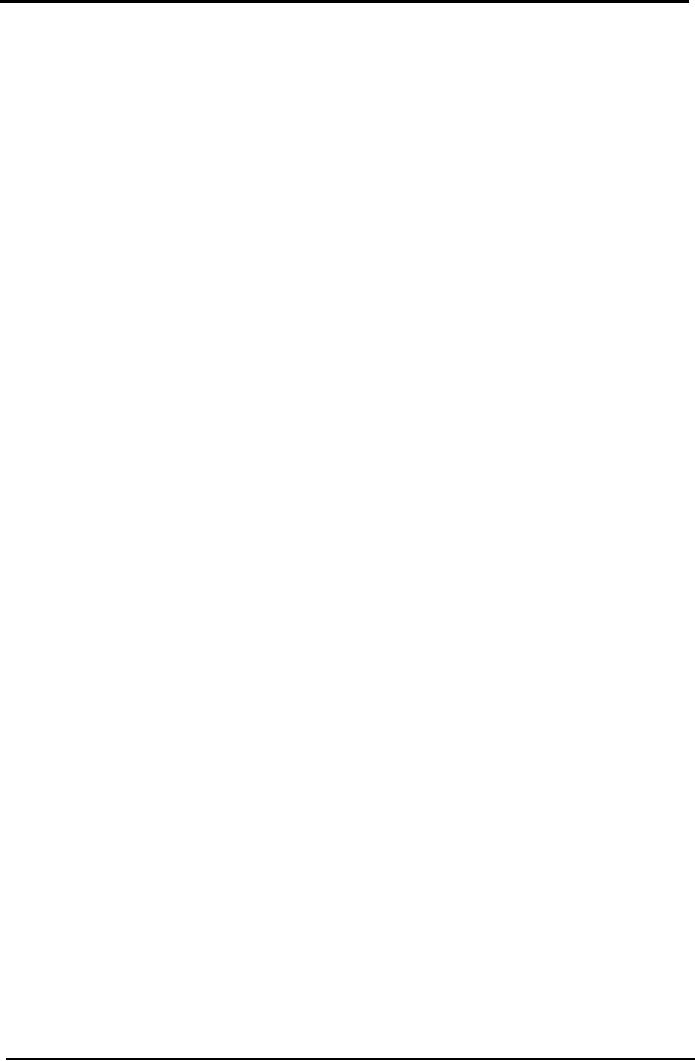
Cost
& Management Accounting
(MGT-402)
VU
Maximum
usage
75
units per week
each
Re-order
quantity--A : 400 units ; B :
600 units.
Re-order
period-- A : 4 to 6 weeks : B : 2 to 4
weeks.
Calculate
for each component;
(a)
Re-order level
(b)
Minimum level
(c)
Maximum level
(d)
Danger stock level.
Q.
4
What
do you understand by maximum stock level,
minimum stock level, and reorder
level?
Calculate
the above from the
following data:
Re-order
quantity
1,500
units
Re-order
period
4
to 6
weeks
Maximum
consumption 400 units per
week
Average
consumption
30
units per week
Minimum
consumption 250 units per
week
Q.
5
The
following information is available in
respect of component
FS-6:
Maximum
stock level
8,400
units
Budgeted
consumptions:
Maximum
1,500
units per month
Minimum
800
units per month
Estimated
delivery period
Maximum
4
months
Minimum
2
months
You
are required to calculate:
(i)
Re-order
level
(ii)
Economic
Order Quantity
55
Table of Contents:
- COST CLASSIFICATION AND COST BEHAVIOR INTRODUCTION:COST CLASSIFICATION,
- IMPORTANT TERMINOLOGIES:Cost Center, Profit Centre, Differential Cost or Incremental cost
- FINANCIAL STATEMENTS:Inventory, Direct Material Consumed, Total Factory Cost
- FINANCIAL STATEMENTS:Adjustment in the Entire Production, Adjustment in the Income Statement
- PROBLEMS IN PREPARATION OF FINANCIAL STATEMENTS:Gross Profit Margin Rate, Net Profit Ratio
- MORE ABOUT PREPARATION OF FINANCIAL STATEMENTS:Conversion Cost
- MATERIAL:Inventory, Perpetual Inventory System, Weighted Average Method (W.Avg)
- CONTROL OVER MATERIAL:Order Level, Maximum Stock Level, Danger Level
- ECONOMIC ORDERING QUANTITY:EOQ Graph, PROBLEMS
- ACCOUNTING FOR LOSSES:Spoiled output, Accounting treatment, Inventory Turnover Ratio
- LABOR:Direct Labor Cost, Mechanical Methods, MAKING PAYMENTS TO EMPLOYEES
- PAYROLL AND INCENTIVES:Systems of Wages, Premium Plans
- PIECE RATE BASE PREMIUM PLANS:Suitability of Piece Rate System, GROUP BONUS SYSTEMS
- LABOR TURNOVER AND LABOR EFFICIENCY RATIOS & FACTORY OVERHEAD COST
- ALLOCATION AND APPORTIONMENT OF FOH COST
- FACTORY OVERHEAD COST:Marketing, Research and development
- FACTORY OVERHEAD COST:Spending Variance, Capacity/Volume Variance
- JOB ORDER COSTING SYSTEM:Direct Materials, Direct Labor, Factory Overhead
- PROCESS COSTING SYSTEM:Data Collection, Cost of Completed Output
- PROCESS COSTING SYSTEM:Cost of Production Report, Quantity Schedule
- PROCESS COSTING SYSTEM:Normal Loss at the End of Process
- PROCESS COSTING SYSTEM:PRACTICE QUESTION
- PROCESS COSTING SYSTEM:Partially-processed units, Equivalent units
- PROCESS COSTING SYSTEM:Weighted average method, Cost of Production Report
- COSTING/VALUATION OF JOINT AND BY PRODUCTS:Accounting for joint products
- COSTING/VALUATION OF JOINT AND BY PRODUCTS:Problems of common costs
- MARGINAL AND ABSORPTION COSTING:Contribution Margin, Marginal cost per unit
- MARGINAL AND ABSORPTION COSTING:Contribution and profit
- COST – VOLUME – PROFIT ANALYSIS:Contribution Margin Approach & CVP Analysis
- COST – VOLUME – PROFIT ANALYSIS:Target Contribution Margin
- BREAK EVEN ANALYSIS – MARGIN OF SAFETY:Margin of Safety (MOS), Using Budget profit
- BREAKEVEN ANALYSIS – CHARTS AND GRAPHS:Usefulness of charts
- WHAT IS A BUDGET?:Budgetary control, Making a Forecast, Preparing budgets
- Production & Sales Budget:Rolling budget, Sales budget
- Production & Sales Budget:Illustration 1, Production budget
- FLEXIBLE BUDGET:Capacity and volume, Theoretical Capacity
- FLEXIBLE BUDGET:ANALYSIS OF COST BEHAVIOR, Fixed Expenses
- TYPES OF BUDGET:Format of Cash Budget,
- Complex Cash Budget & Flexible Budget:Comparing actual with original budget
- FLEXIBLE & ZERO BASE BUDGETING:Efficiency Ratio, Performance budgeting
- DECISION MAKING IN MANAGEMENT ACCOUNTING:Spare capacity costs, Sunk cost
- DECISION MAKING:Size of fund, Income statement
- DECISION MAKING:Avoidable Costs, Non-Relevant Variable Costs, Absorbed Overhead
- DECISION MAKING CHOICE OF PRODUCT (PRODUCT MIX) DECISIONS
- DECISION MAKING CHOICE OF PRODUCT (PRODUCT MIX) DECISIONS:MAKE OR BUY DECISIONS